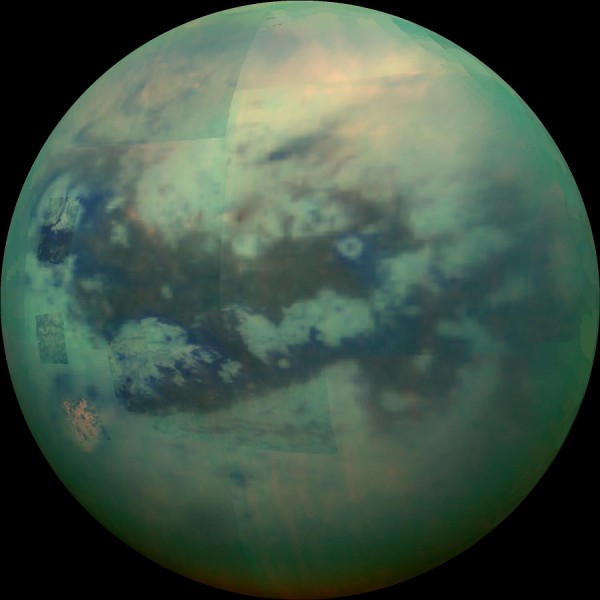By Ana Verayo, | November 08, 2016

This composite image shows an infrared view of Saturn's moon Titan from NASA's Cassini spacecraft. (NASA/JPL/University of Arizona/University of Idaho)
Strange clouds are forming on Saturn's largest moon, Titan. NASA's Cassini probe captured new imagery showing the moon's northern hemisphere and its changing seasons.
Titan is now entering summer. Cassini conducted a survey across the northern polar region of the moon, revealing incredible atmospheric conditions and dynamic cloud formations.
Like Us on Facebook
The series of images reveal how methane clouds formed a small band that is moving yet slowly fading along the northern hemisphere of Titan.
The images, taken between Oct. 29 and 30, have been compiled into a time-lapse video. Cassini was able to take a photo every 20 minutes in a span of 11 hours, tracking Saturn moon's seasonal strange clouds.
NASA scientists say that time lapse movies like this help scientists observe cloud dynamics as they develop and move over the surface and Titan before fading.
Apart from these dynamic, strange clouds, Titan is also one of the places in our solar system that possess liquid oceans and lakes on its surface. However, these liquid bodies are not made of water like those on Earth.
Instead of liquid water on Saturn's moon, its oceans and lakes are filled with liquid methane and ethane. On Earth, methane and ethane can also be found, but in gas form in our atmosphere.
Titan is also so cold, reaching minus 292 degrees which suggest that these frigid temperatures can change the molecular structures and states of gasses that are otherwise seen differently on Earth.
-
Use of Coronavirus Pandemic Drones Raises Privacy Concerns: Drones Spread Fear, Local Officials Say

-
Coronavirus Hampers The Delivery Of Lockheed Martin F-35 Stealth Fighters For 2020

-
Instagram Speeds Up Plans to Add Account Memorialization Feature Due to COVID-19 Deaths

-
NASA: Perseverance Plans to Bring 'Mars Rock' to Earth in 2031

-
600 Dead And 3,000 In The Hospital as Iranians Believed Drinking High-Concentrations of Alcohol Can Cure The Coronavirus

-
600 Dead And 3,000 In The Hospital as Iranians Believed Drinking High-Concentrations of Alcohol Can Cure The Coronavirus

-
COVID-19: Doctors, Nurses Use Virtual Reality to Learn New Skills in Treating Coronavirus Patients







